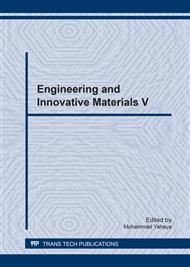p.113
p.119
p.127
p.133
p.138
p.143
p.148
p.152
p.159
Effect of Secondary Phase Precipitation on Impact Toughness of Duplex Stainless Steel
Abstract:
Duplex Stainless Steel (DSS) combines good mechanical strength and ductility with moderate to good corrosion resistance in a variety of environments. DSS are prone to the formation of various intermetallic phases (σ, χ, π, R), carbides (M23C6) and nitrides (Cr2N), when it exposed to temperatures lower than 1000°C. This study focuses on effect of secondary phase precipitation on impact toughness of ASTM A182 DSS. Cylindrical bar of DSS was open die forged in the temperature range of 1200-1050°C. After the forging, the bar was slow cooled by covering it with ceramic wool. This leads to the formation of σ phase at the ferrite/austenite interfaces and significantly reduced the impact toughness of the material. Solution treatment was done at different temperature and effect on toughness studied. The microstructural changes produced as consequences of the distinct test condition have been analyzed by means of optical and electron microscopy, X-ray diffraction.
Info:
Periodical:
Pages:
138-142
Citation:
Online since:
March 2017
Authors:
Price:
Сopyright:
© 2017 Trans Tech Publications Ltd. All Rights Reserved
Share:
Citation:


